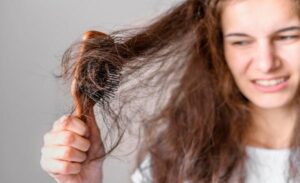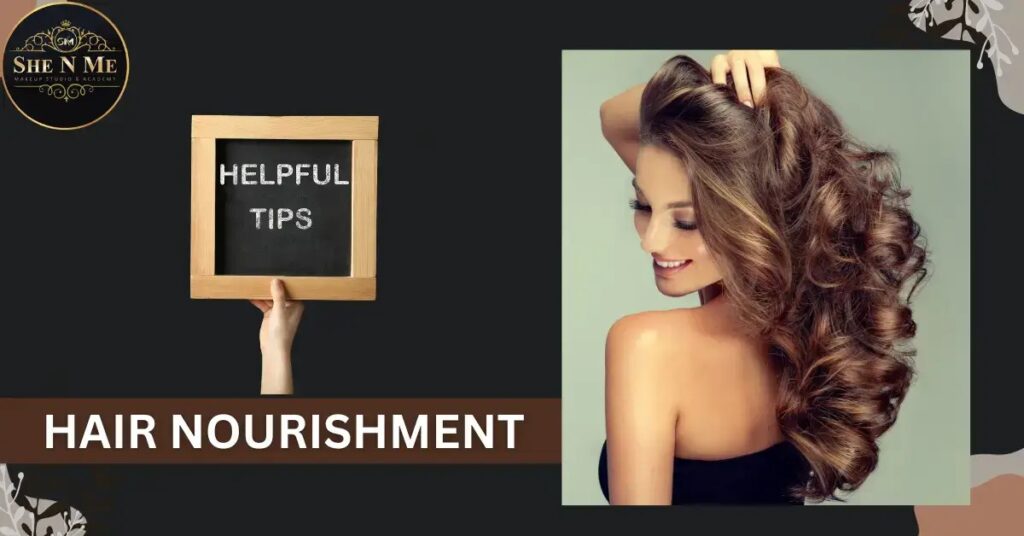Know what causes bad hair?
Using bleach

The American Academy of Dermatology (AAD) states that lightening hair more than three shades lightens it and necessitates larger amounts of peroxide or bleach, both of which increase the risk of hair damage. Dryness results from bleaching the hair, and frequent bleaching can cause more severe damage, like split ends and breakage.
The Heat Look

Although we adore hot tools for creating in-vogue looks like a big blowout, frequent usage of them can be detrimental to our hair. Our hot tools can frequently achieve temperatures higher than those we typically use to cook meals, which can severely fry your hair strands. It’s okay to use them occasionally, but you should always use them in conjunction with good hair habits, like using heat protectant and utilizing the lowest temperature possible.
Hair Shade

Additionally, permanent hair color can dry out your strands, causing issues including dryness and brittle hair. It is therefore recommended to leave your hair for six to eight weeks—or more—to repair in between hair color appointments. The AAD also suggests choosing a darker hue than your current hair color because it prevents bleaching and is less harsh on your hair.
Is hair damage reparable?

Healthy hair habits, such as masking, avoiding heat, and brushing, can help restore damaged hair to some extent. However, in order to stop the breakage from spreading further up your hair, it’s advisable to have a haircut and start over if your hair has already started to fall off.
How can severe hair damage be fixed?

You have to take extra care when taking care of hair that is severely damaged. Steer clear of bleaching, hair color, and other forms of heat if you’re attempting to cure your hair. Washing your hair too frequently can cause dryness and more damage to your hair, therefore, it’s ideal to wash damaged hair no more than twice a week.
It’s crucial that you include a protein treatment in your routine, such as the L’Oréal Paris Elvive Total Repair 5 Power Restore Multi-Use Treatment. Apply it as a leave-in treatment to strengthen weak hair fibers or in place of conditioner. Because a protein concentration leaves hair feeling smooth and healthy-looking while strengthening it, it is beneficial for damaged hair.
How to Handle Broken Hai
There are a few ways you can take care of your hair to repair the damage that has already occurred and avoid more damage, even though you might believe that getting a haircut is the only option to restore your damaged hair. Here are 5 healthy ways to protect your damaged hair.
1. Apply Conditioner and Shampoo on Damaged Hair

Choosing a hair care system that was designed specifically for damaged hair is the first step towards having healthy hair. Because they reinforce weak hair bonds and strengthen hair from the inside out, we adore the L’Oréal Paris EverPure Sulfate-Free Bond Repair Pre-Shampoo Treatment, L’Oréal Paris EverPure Sulfate-Free Bond Repair Shampoo with Citric Acid, and L’Oréal Paris EverPure Sulfate-Free Bond Repair Conditioner and Repair Shampoo, both of which contain citric acid.
2. Take a shower with lukewarm water.

Although taking a hot, steamy shower feels wonderful for your skin, the heat can be very damaging to your hair, particularly if you have damaged strands. Extremely hot water depletes your hair of important oils, which can prematurely fade your hair color and make your hair feel even drier.
3. Apply a Treatment for Deep Conditioning

It’s time to incorporate a deep conditioner into your weekly hair care regimen if you haven’t previously. Treatments for deep conditioning focus on typical indicators of damaged hair, such as breakage, split ends, and dryness. In addition, a lot of deep conditioning treatments include collagen peptides and other nutritious chemicals that strengthen hair and shield it from further damage.
4. Replace your brush with a wide-tooth comb.

Serious hair damage can result from tangles and the vigorous tugging motions of a hairbrush. This is especially true for wet hair, but it also applies to dry hair. Wet hair is the most delicate and consequently most prone to damage, according to the AAD. For this reason, when your hair is damp, it is better to use a wide-tooth comb because the large gaps between the teeth will smooth your hair more easily and with less tugging and friction.
5. Use a T-shirt to dry your hair.

Use your old, faded t-shirts to dry your hair as you get out of the shower rather than throwing them away. Using a terrycloth towel to vigorously massage your hair dry can cause intense tugging, which can cause breaking even with healthy hair.
Because cotton shirts are absorbent and more kinder to hair than towels, they function wonderfully. Recall that the key to taking care of damaged hair is to be kind. A microfiber towel is an excellent substitute that can be used to swiftly absorb moisture and dry hair without causing tugging.
Quick tip: Apply conditioner that stays in.
After washing your hair, using a hydrating leave-in conditioner can help to seal split ends, minimize frizz, and make your hair feel and look smoother and easier to maintain. The lightweight, creamy composition of the L’Oréal Paris Elvive Total Repair 5 Protein Recharge Leave-In Conditioner Treatment smoothes the appearance of damage and functions as a heat protectant, making it an excellent option.
Kindly use a pillowcase made of silk or satin.
As previously indicated, breakage can result from friction and tugging caused by brushing your hair; therefore, if you sleep rough, friction between your hair and your cotton pillowcase may also cause breakage.
I hope you enjoyed reading with us!
Until next time, kindly stay tuned with us to read our blog on yoga for glowing skin and healthy hair for more hair care tips.
Follow us on our social media accounts for additional information ![]()


